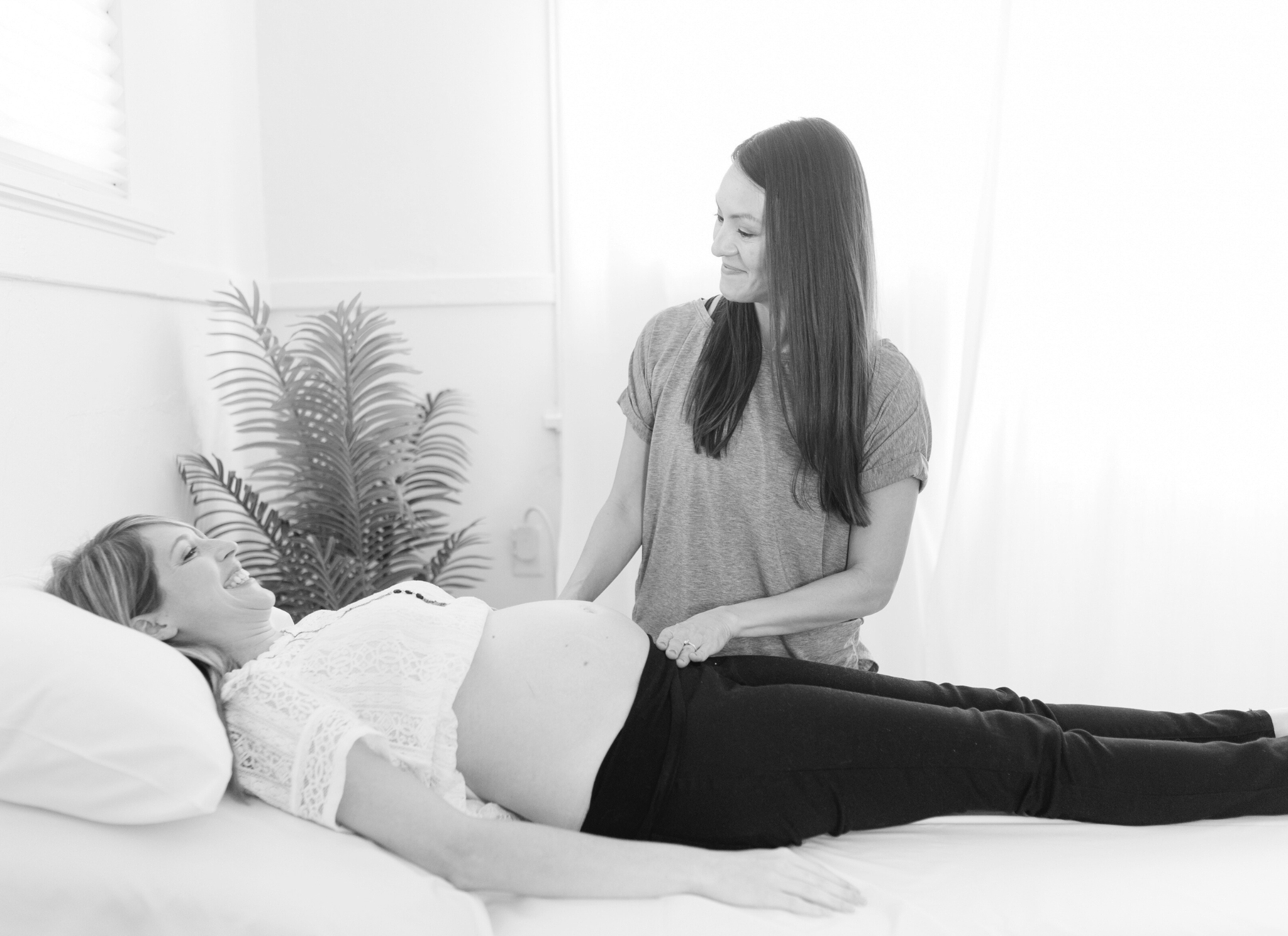Pregnancy changes our bodies in extraordinary ways. But pain and discomfort in your pelvic floor during pregnancy aren’t inevitable! Pelvic floor physical therapy during pregnancy is one way we can proactively take care of our body. And the earlier we can start, the better.
The Benefits of Pelvic Floor Therapy During Pregnancy
If you’re new to pelvic floor physical therapy, you might be thinking, “Isn’t this just about kegels?”
Short answer? Nope!
Many people don’t need kegels. Some may need a mix of kegels for strength and stretching for relaxation.
A pelvic floor PT can help determine what’s right for you. They will give you a wide range of pelvic floor exercises, stretches, and other strategies to keep your down there in tip-top shape.
Specifically, pelvic floor PTs can help pregnant people with:
- Prevention of pelvic floor problems
- Physical exercise and pregnancy modifications
- Pain relief
- Preparation for birth and postpartum recovery
Prevention
Pelvic floor physical therapy isn’t just about treating problems that already exist. It’s also about preventing problems in the future!
Pelvic floor therapy during pregnancy can help you prevent future dysfunction by guiding you through strategies to:
- Strengthen your pelvic floor and core
- Improve posture throughout different pregnancy stages
- Adapt daily activities to prevent pain or strain on these muscle groups
- Minimize the risk of diastasis recti, a separation of the abdominal muscles
Physical Exercise
Being active throughout pregnancy is not only safe, but it’s also healthy for mom and baby!
Staying active throughout pregnancy helps to:
- Maintain strength and flexibility
- Manage weight gain
- Optimize cardiovascular health
- Alleviate pain
In that regard, pelvic floor PTs are like pregnancy experts in your back pocket. They can help determine pregnancy-safe exercises, practice proper breathing, and change your posture. They can even support you in preparing for the birthing process itself.
Pain
Aches and pains seem to be par for the course in pregnancy, especially in the later weeks. Pelvic floor PTs can help you assess and treat lower back, hip, pelvic, and postural pain and can guide you to:
- Relieve muscle tension causing sciatica, low back pain and tailbone pain.
- Modify your sleeping and standing posture to decrease strain on joints.
- Strengthen weakened muscles causing pubic symphysis (SPD) or sacroiliac joint (SIJ) pain.
- Optimize your posture to decrease muscle and ligament strain.
Preparation
Some people think pregnancy, labor, and delivery are going to do a number on our body, no matter what. But the truth is, there’s plenty we can do to prepare ourselves, our pelvic floor, and our core for birth.
Pelvic floor PTs can advise on:
- Pelvic floor coordination (how well you can tense, relax, and bear down your pelvic floor muscles)
- A range of birthing positions
- Breathing and relaxation strategies to use in the toughest moments
- Perineal stretching to prepare in advance
- Cesarean birth planning and recovery
- Postpartum care
If you’re experiencing any of the following symptoms, a pelvic floor PT might be extra helpful for you:
- Urinary incontinence or fecal leakage, like when laughing, coughing, or sneezing
- Constipation
- Groin and back pain, including lightning crotch and round ligament pain
- Pelvic pain during sex
- Existing pelvic organ prolapse
- Diastasis recti or abdominal separation
What to Expect from Your Pelvic Floor Evaluation
Step 1: Verbal Assessment
The first thing any good PT should do before a physical exam is talk to you about your concerns. We want to get to know you! Taking a verbal history and learning about concerns can inform a physical exam and tell us what we should be looking for and what your goals are.
Step 2: Pelvic Floor 101
Your PT should then give you the rundown on your pelvic floor, everything in it, and everything it does. Many pelvic floor issues are connected, and the more you know, the better you can address your symptoms.
Step 3: Physical Exam
Your pelvic floor physical therapist will examine your pelvic muscles for tension, weakness, and coordination issues. This will involve both internal and external exams. The external exam will look at your spine, hip and abdominal wall muscles and the joints that connect to your pelvis.
If you’re nervous about an internal exam, remember that it’s never mandatory. You have complete control and can consent to decline an internal exam!
Second, pelvic floor PT is often less invasive or uncomfortable than a gynecological pelvic exam. We don’t use speculums, and we go much slower and talk you through the entire process. We can stop at any moment you would like.
Pelvic floor exams are completely safe during pregnancy. Talk to your doctor about any concerns or conditions your therapist should know about.
Step 4: Homework
Pelvic floor PTs are natural teachers. We have a passion for passing along vital information to help you feel more prepared to address your concerns at home. If you receive pelvic floor therapy during pregnancy, your provider might start assigning homework from the get-go:
- Diaphragmatic breathing
- Stretches to relax the pelvic floor
- Strengthening exercises
- Perineal massage
Pelvic Floor Therapy and C-Sections
Many believe c-section mamas don’t need to strengthen their pelvic floor or core during labor. This means they might not see a Pelvic floor PT.
But that’s just not true!
While the birthing process is certainly different, pelvic floor dysfunction in c-section deliveries is all too common. There are so many benefits to working with a pelvic floor PT during pregnancy and childbirth.
For example, take the C-Section scar itself. Restriction in this area can prevent scar mobility and contribute to pain, numbness, sensitivity and a scar “shelf.” Pelvic PT teaches techniques to mobilize your scar to improve mobility and increase abdominal wall and core strength.
Pelvic floor physical therapy can give you exercises for a better postpartum experience, no matter how you gave birth.
Start today.
Always get approval from your provider before starting a new exercise routine. After that, check out the V-Hive Membership!
The V-Hive offers online, on-demand, pregnancy-safe workouts for your pelvic floor and core:
- The Pregnancy Series: Strengthen your pelvic floor and core and decrease discomfort with this week-by-week suite of workouts and pelvic health tips designed especially for pregnant bodies.
- The Childbirth Prep Series: Prepare your pelvic floor and core for birth and build confidence as your due date approaches. (If you’re in your third trimester, your body will love you for this!)
- The Childbirth Recovery Series: Gentle stretching and strengthening routines for your first six weeks of recovery. (Great for vaginal delivery or C-section deliveries.)
- The Postpartum Series: Regain pelvic floor and core strength strength after giving birth and return to your favorite fitness routines without leakage or pain (no matter how long ago it was!).





